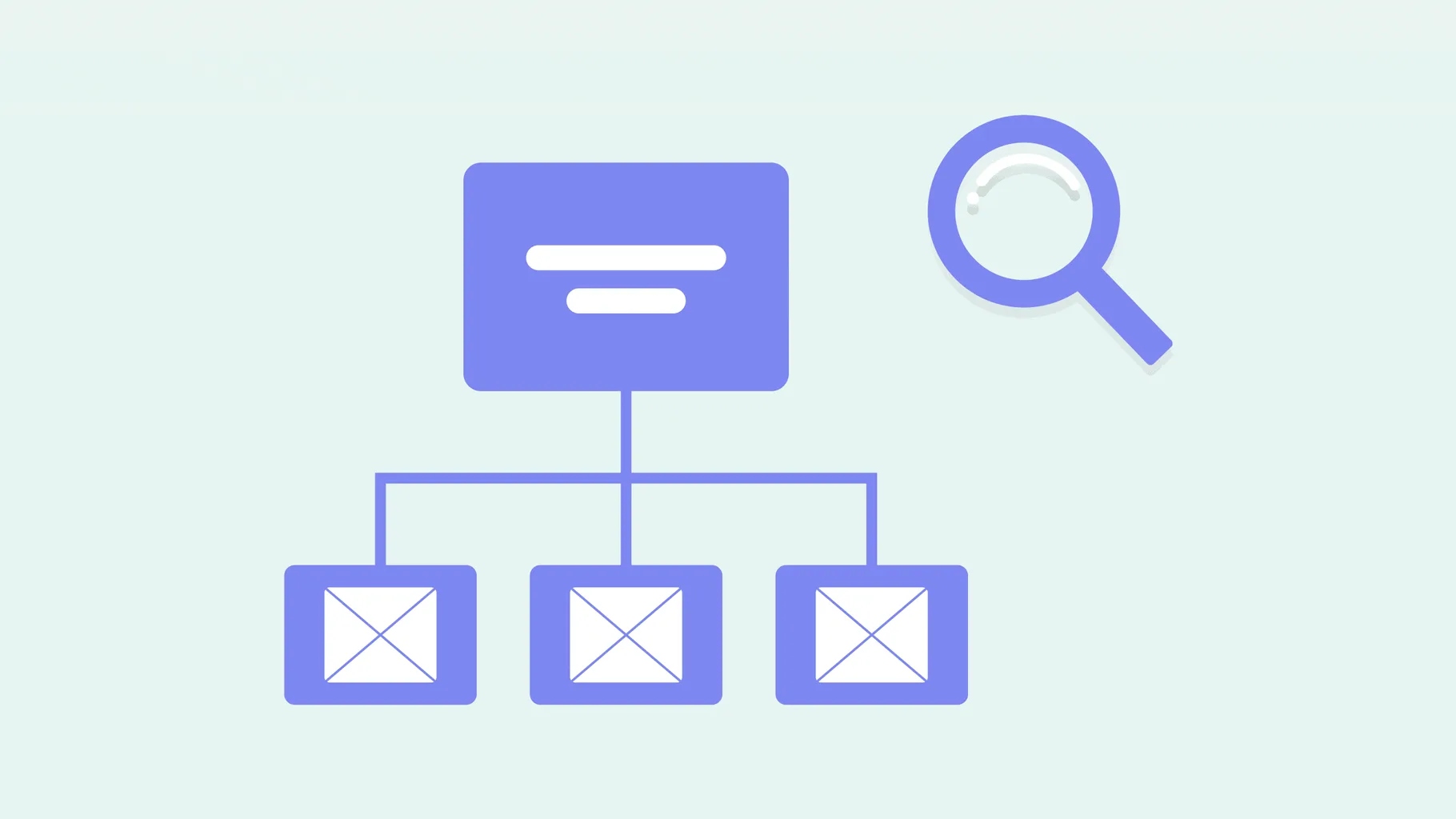Currently, all companies in the world have web pages and, in turn, URLs. This is a key step to being able to grow and succeed in the business world. The important thing here is that potential customers can find your website online. Therefore, the XML sitemap priority must be the key point. This is because, thanks to this, search engines can locate the URLs of your web page.
In this article, you will see all the information you need to know about XML sitemap priority. The first thing will be to define this search map so that you can understand it better. Secondly, we will show you the differences between HTML sitemaps and XML sitemaps. In addition, we will show you how an ideal XML sitemap should look, complying with key characteristics.
- An XML sitemap: What is it?
- How do XML and HTML sitemaps differ from one another?
- What an XML sitemap priority looks like?
- Why do I need an XML sitemap for my website?
- Which pages need to be in your XML sitemap?
- Contact Digitizen Grow and thus obtain the best SEO consultant
1. An XML sitemap: What is it?
In simple terms, an XML sitemap is a roadmap for all search engines. In addition, it takes care of listing the most important content of your website in XML format. For this reason, search engines will be able to very easily find and index your content and ultimately display it on the various search engine results pages.
A priority XML sitemap will be to include in it any web page that you want to show in search engines. This will happen because a sitemap will guarantee that your content will be discoverable. Let us take an example where you have web pages that are not linked from any part of your site or the web in general.
If this happens and those pages do not have hyperlinks pointing to them, no web crawler will be able to find them. Having an XML sitemap ensures that search engines will be able to find any page you want to include in the SERPs. However, this is not all, because this can have more utilities.
A clear example is that you can use an XML sitemap to provide information to search engines. This is in a way, such as when your content was last updated and when those pages have a higher priority. In case you consider it necessary, you can go online and look for a sitemap example.
2. How do XML and HTML sitemaps differ from one another?
Two different types of sitemaps can be added to your site. We will find an XML sitemap and an HTML sitemap. You will be able to observe that the XML sitemaps make use of a language that is extensible markup. On the other hand, HTML sitemaps make use of a language that is hypertext markup. In addition, apart from the code, they must also fulfill different functions.
2.1 The XML sitemap
It can be noted that XML sitemaps do not have a human-friendly language. If you search for What is a site map example in Google, you will be able to verify this. Also, these are fonts that were explicitly designed for search engines. They are in charge of helping search engines such as Google they can understand the URL that they must crawl and that has priority.
In addition, they can also determine how often these URLs change and which ones were recently added to the site. With this information, it is possible to help search engine programmers. So they can better assess when and how often they will need to re-crawl a particular URL.
2.2 The HTML sitemap
Unlike XML sitemaps, HTML sitemaps are web page that is designed for both humans and robots. You can google this information. Therefore, for humans, an HTML sitemap helps you to have better navigation through any website.
On the other hand, if you look at it from the perspective of a search engine, this sitemap is a useful tool. Because it helps with URL discovery. However, this is not the only value for SEO. If you want to apply this type of sitemap but do not know how to implement it, you can look for different HTML site map examples.
2.3 PageRank is also distributed around a website through HTML sitemaps
You should know that one of the most relevant factors for a web page is the loading speed. Your website must pass the Google PageSpeed Insights test. One of the tools that can help you with this is XML sitemap priority.
Generally, HTML sitemaps are attached from every page of a site. That is, through a navigation link in the footer. Therefore, a great PageRank is generated that is directed toward them. This means that many of the incoming PageRank from other pages of the website through internal links.
3. What an XML sitemap priority looks like?
Among the strategies that SEOs must take into account, to position web pages, the most important is the XML sitemap priority. To apply this tool, you must know what it looks like. Thinking about this, this section was created where you will see all the characteristics that a good XML sitemap should have.
3.1 XML declaration
Simply put, the XML declaration is in charge of guiding search engines and instructing them to read an XML file. The XML declaration is a very important factor because it establishes the version of the XML and the character encoding used. The ideal configuration should be version 1.0 and its encoding should be UTF-8. The file steamap.xml contains the XML declaration at the top.
3.2 XML sitemap change frequency
Currently, there are two types of tags when it comes to URL modifications. The first is <lastmod>, what it does is determine when the last modification of the URL content was made. For instance, if you updated a blog post on February 8, 2023; the <lastmod> tag will be 2023-02-08.
This is important because it tells search engines when the content of the URL was last revised. Believe it or not, this is a determining factor when a search engine crawls that page again.
On the other hand, there is a second tag called <changfreq>; which indicates how often the page may change its content. The purpose of this tag is to give search engines a rough idea of how often that URL may be recrawled.
There are various possibilities for changing the frequency of the map; among them, are always, weekly, monthly, annually, hourly, daily, and never. For instance, if you set the tag as follows <changefreq>Weekly</changefreq>; the search engine will crawl that URL every seven days.
3.3 XML sitemap priority
There is a third tag called <priority>. The function of this is to indicate the priority of your URL compared to the many others on the website. In simple terms, it allows search engines to distinguish which is the highest priority URL; by allocating a crawl budget to your site. Priority values have a maximum and a minimum. The maximum is 1.0 and there is no higher value and the minimum is 0.0.
The problem that currently exists is that Google ignores <priority>, in all XML sitemaps. This is because they consider it a bag of noise or an obstacle, according to Gary Illyes.
3.4 URL in XML sitemap
The main tag that any XML sitemap has is the <URL> tag. There are two ways to write it, the opening <URL> and the closing </URL>, and between them you must indicate the location of that URL, using a third nested <loc> tag. In addition, it is essential that the URL is indicated to be absolute and the HTTP:// or HTTPS:// protocol must be included. In simple terms, the URL should be ordered as it would appear in a web browser.
3.5 URL Set in XML sitemap
Set URLs are containers for all the URLs that the sitemap contains. To begin with, you must indicate which protocol standard the sitemap.xml uses. The standard protocol is 0.9. Microsoft, Yahoo, and Google are fully compliant with the standard protocol. As a result, it is the most recommended to use.
4. Why do I need an XML sitemap for my website?
Search engines, generally, use certain bots called “spiders” to discover what is the content on the web. The moment spiders find a new page via an internal or external link, they add that page to their index.
Surely, you wonder what is the problem with tracking; The answer is that search engines are not able to find all the content belonging to the web in this way. In case a website is not linked via another well-known site, unfortunately, the search engine will not find it. This is where the XML sitemaps will be very useful.
All XML sitemaps take care of being crawl insurance. This is because they tell search engines where to find the most important web pages on your website. Thus, they support you with the indexing and discovery of your content. This is important to understand because search engines cannot rank without indexing them first.
As you can see, using an XML sitemap is something very important and can be a determining factor for the success of your web page. These are the classic things that SEOs should know, and that is why you should hire a good company that will ensure that all of this will be included. The best existing option is DigitizenGrow in Dubai.
5. Which pages need to be in your XML sitemap?
When you are creating your XML sitemap, you will surely wonder which pages you should add. The pages that you must include are all those that you want to show in the search results in your XML sitemap. If they do not meet that characteristic, you should skip them. In simple terms, you should only include useful pages, including:
- Blog posts.
- Homepage.
- About the company.
- Pages of the products or services offered.
- Contact page (email, phone number, and other forms of contact).
Also, it is important to mention that the following pages should not be included.
- Media files that are private (videos, photos, and more).
- Thank you pages (if you are interested in digital marketing and want to use social networks, thank you pages are better there).
- Label pages.
It is important to note that the fact that a page is omitted does not mean that its sitemap does not mean that it will not be indexed. In case the page has links pointing to it, there is a small possibility that Google or any other search engine will crawl, index and show that page in the results returned by the search engine.
In case you want to remove these items, there is a way to ensure that removal. To achieve this, you must omit the one from your XML sitemap and add a no-index tag to it.
6. Contact DigitizenGrow and thus obtain the best SEO consultant
All companies currently need a website and to stand out from the rest, they need companies dedicated to digital marketing. The company you are going to hire must have good SEO experts company in Dubai. In Dubai, there is a company that has these advisors and many other services related to digital marketing and it is called DigitizenGrow.
We are the best company that offers digital marketing services in Dubai and the UAE. Our mission is to provide digital solutions, in an innovative and high-quality way, so that your product or services gain a lot of value. To get in touch with us you can call us at +971 43 316 688 or write to us through our email contact@digitizengrow.com.
In case you are looking for job opportunities in the UAE or any other country in the Middle East; The best option that exists is to enter The Talent Point. In this portal, you will be able to see different job offers from different companies that may be from your company.











